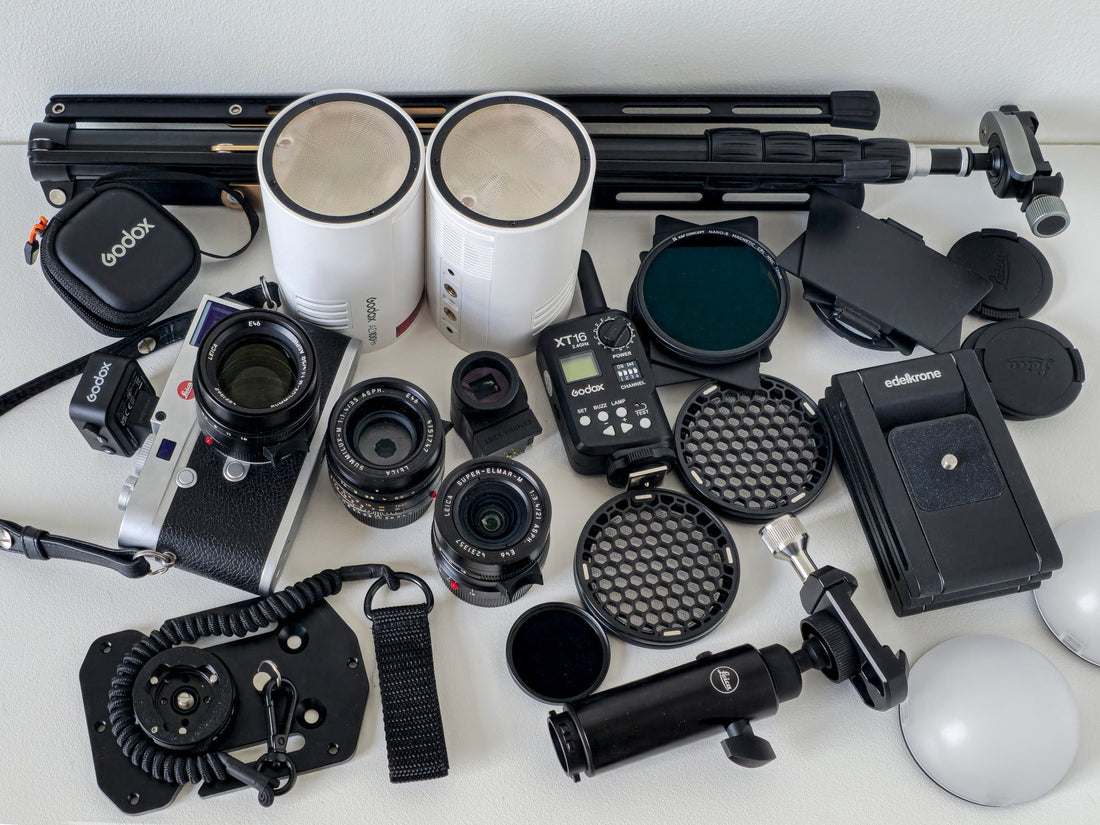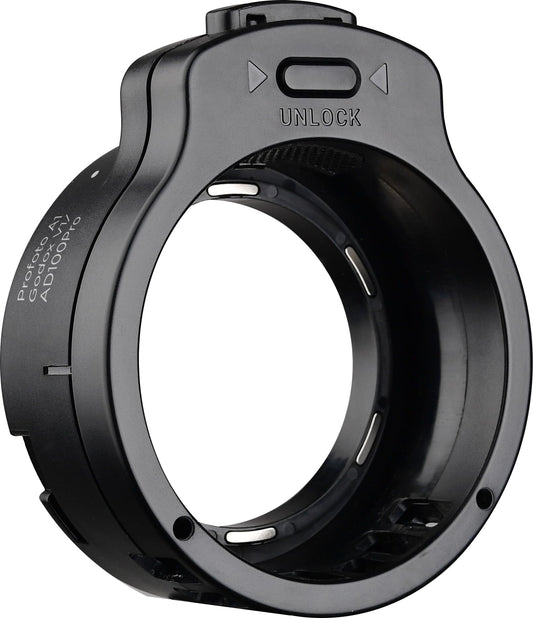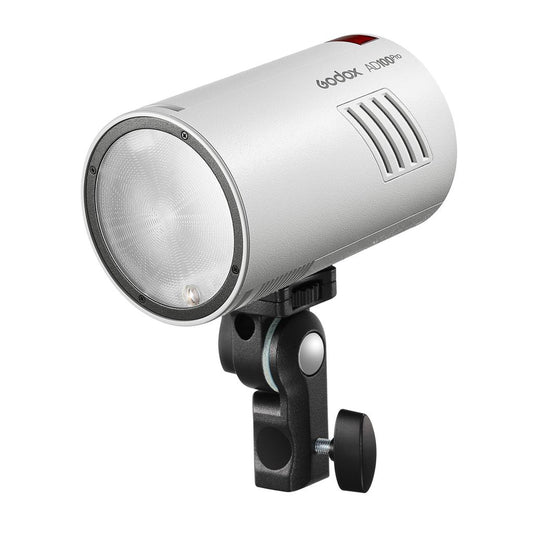
A Lifelong Obsession With Photography Gear; How It All Started
Share
This blog was born out of frustration... I spent literally years in search of the perfect camera setup. I started on this journey as a teenager when my dad handed his Zenit---a soviet era brick of a camera---down to me. Yes, only film was available back then, and yes, I'm that old, I know, thank you for reminding me you Gen Z snowflakes! Interestingly though, pretty much everyone without an exception assumed that by using an old film camera, I must have been taking photos in black and white. The truth is, however, that my preference was always for slide film, even though its exposure latitude was rather low. In any case, the microprism manual focusing was not to my liking, and the built-in selenium-cell light meter was mostly done for. Despite all of that, I did manage to get a few decent documentary style photos with it. But when someone tells you to use the Sunny 16 rule, you might as well punch them in the face, that is an utter non-sense of a rule that just does not work, especially not with slide film!
Yes, only film was available back then, and yes, I'm that old, I know, thank you for reminding me you Gen Z snowflakes!

Nikon
I then moved on to Nikon, first through a few film SLR bodies in highschool, then several DSLRs throughout uni, with various cheaper Nikkor lenses to go with them. I am old enough to vividly remember Nikon D70 and Canon Rebel being the first truly mass market digital SLRs, neither of which I owned funnily enough. Eventually I settled on some heavy-duty but mostly just heavy lenses such as the Nikkor AF-S 17-35 (fast but not sharp enough) and 70-200 in white, both f/2.8, plus a big Gitzo Mountaineer tripod. I lugged that kit in a huge 32L backpack around the world, through airports and foreign cities, up and down countless mountains, and pretty much everywhere you could possibly think of. In Gothenburg, Sweden, they refused to check the tripod in as a hand luggage because supposedly it could have been used as a weapon, like a baseball bat as the rather unhelpful lady explained. Luckily, the tripod arrived in one piece with only a barcode tape holding the legs together.

Hasselblad
At one point I also had a brief but very intense fling with a Hasselblad 503cx and a rather stiff 80/2.8 lens. That stuff of legends I even took on a rail trip through Italy what attracted a fair bit of attention. It is a rather different experience looking down the chimney of a waist-level viewfinder due to its unique 3D visual effect. Unlike other optical or digital viewfinders which are designed for single eye use only, with Hasselblad you are looking down at the ground glass with both of your eyes. This gives you an incredible perception of depth, not dissimilar to a 3D TV experience, albeit more natural. However, the image is also mirrored making framing unbelievably unwieldly plus the glass itself attracts dust like there is no tomorrow. What is more, the body gets jammed every so often requiring a manual reset by sticking a screwdriver into the bowels of the camera. Unfortunately, the bother and cost of having to get 6x6 film developed and scanned proved too much and I sold that whole kit to some other unsuspecting wannabe hipster. I still plan to buy another 500-series camera now that 100Mpx digital backs are available though. The mechanical cocking, mad waist level viewfinder and a thunderslap of a mirror are simply too magical to pass on.
Leica
But back to the main storyline: Eventually, after attending a war photojournalistic exhibition at the BFI in London, I realised why some of the world's most famous photos---THE portrait of Che Guevara by Korda including---have been taken on Leicas. Many professionals throughout the history preferred Leica cameras for to their compact size, solid build, rapid fire, and tiny yet high quality glass. The "only" price to pay was the steep price itself, obviously, plus the manual focusing through the hallowed but otherwise completely outdated rangefinder. Thus, I sold my entire Nikon gear at around the time when Sony was taking the market by storm with their Alpha mirrorless system and switched over to the OG 35mm mirrorless instead.
So here I am, some 22 years into my journey and many thousands of British pounds later, being a manual focus shooter still on the hunt for what else to add to my collection. The saddest part is that the eclectic mix pictured at the very top of this post is only a fraction of the crap I have accumulated the gear I have carefully curated over the years.
On balance, I bought and sold gear, I rented gear, I tried different systems and most likely spent enough money to pay for a decent family car. I also took pictures at weddings, events and birthdays, and got paid for doing so. However, I would never consider myself a pro because that money barely covered the cost of some of that gear, let alone anything else.
Frustrations, Frustrations, Frustrations
And the frustrations continue. There are clearly way too many to count from my years on the hunt but a few highlights can be summarised as follows:
- Budget is always a constraint. Everyone has a budget. Even the Crown Prince of Saudi Arabia building a futuristic city in the desert has a budget. So the point is not necessarily to buy the cheapest item but to buy something that is a good value for money, i.e. a good balance between the desired performance, functionality and your target price.
- Not everything fits together. Just because something is a fit on paper, it does not necessarily mean it will actually fit in practice. Recently I bought a half an inch long UNC 3/8-16 flat head marine-grade hex screw (a large tripod mount stainless steel screw for normal people) only to discover that the head is too tall and too wide and thus will not fit into the quick release system I was assembling. So now I have a set of 10 of those screws that are utterly useless to me. Trial and error my friends... mostly error that is.
- Utility value is difficult to determine. I have given up on going to the brick and mortar shops any more because each time I do that, I already know more about the specific item in question than any of the pimply shop assistants at hand. The only reason to pay them a visit these days is to physically examine the product yourself before ordering it online for cheaper anyway. Unfortunately, it is not only the shop assistants that are lacking information. The most important aspects for determining the true utility value for a specific purpose are only available through some obscure reviews online, if that.
Be a Savvy Shopper
Some 15 or so years ago, the likes of Gitzo and Really Right Stuff were at the absolute top of their game. Since then, however, the Chinese have caught up firstly through manufacturing blatant knock-offs but eventually through innovation of their own. Especially aluminium CNC machining around the Shenzhen area has made such a progress that if you know what to look for, you can get 90% of the performance for 10% of the price. And how would I know I hear you ask. Well, I bought a few of those items over the years and the quality improvements are staggering. Obviously, my experience is only anecdotal at best, but it is nonetheless a good indication of the overall trends. Recently, there has been an influx of cheap Chinese lenses so this whole cycle repeats once again. Soon, they will catch up on quality but not cost.
But please do not get me wrong. I am not interested in geopolitical trade wars and any of that. My phone and soft boxes are from South Korea, my camera and lenses are from Germany, my quick release plates are from the USA (themselves a knock-off and eventual improvement on the original Swiss design), my flashes and light stands are from China, and my z-folding tripod head is from Turkey. The aforementioned Japanese and Swedish cameras and the Italian designer tripod I sold on already, while the Russian camera and lenses are still somewhere in a cupboard at my parents' house. I am simply interested in getting the best bang for my buck. We live in a truly global world and I intend to make the most of it!
The Long and Hard Way
The algorithm to getting what you want (I deliberately did not say "need" since you and me we both know why, let us not kid ourselves) is relatively simple:
- Identify what it is you want by searching the Internet and looking for specific criteria. Most of the potential candidates you do not even know exist yet.
- Once you narrow down the selection, you then have to check whether this new item is going to be compatible with whatever kit you either already have or are planning to assemble as part of this latest acquisition. This effectively narrows down the available search space in point 1. above but is insanely time consuming.
- Once you settle on which specific items from which specific manufacturers you would like to buy, the final step is to find where to get them from for the best price possible. If you are unlucky like me in many cases, you discover that what you are after is either unavailable in your country or already out of production globally. Case in point being Platypod Ultra which has been discontinued and superseded by Platypod Delta. Looking at the two, I would rather get the Ultra, thank you!
- Repeat steps 1. to 3. until you find what you want, that is compatible with the rest of it, for the price you are able to afford (and willing to pay), and is actually available in a location where you live. Simples!
I have personally spent untold months of effort searching the deepest corners of the Internet to get the best possible fit for a specific photographic purpose. Some may call it an unhealthy obsession but I would like to think of it as a thorough market research, maybe a hobby of sorts, hard to tell these days.
The Short and Simple Way
Let someone else do it for you. I have very carefully, through desk top research and trial and error by spending my own hard earned cash, assembled several kits at the best possible price for specific purposes which are available in our shop and described in detail as part of this blog. Spend the time taking actual photos instead of chasing the impossible like I do.
My selection criteria when buying and recommending kit are very simple. It has to be:
- Of high quality and fit for purpose that will survive professional use and abuse; and
- Extremely light and portable, fast to assemble and compact for both travel and storage; and
- Reasonably priced, going to the source manufacturer rather than buying white labelled versions of the same thing at inflated prices. The exact same tripod or a flash head will perform the exact same function regardless of which brand name in which colour is printed on it. And I mean the very same one, not a similar looking one! See a separate article the relationship between brands and OEMs.
Here is an example of a ready-made cross-polarization kit which completely removes glare and reflections when photographing artwork that you can buy in our shop.




